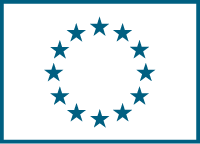An innovative and sustainable plan for managing public lighting and combatting light pollution in Le Mans Métropole
(URBAN LIGHT PLAN)
Date du début: 1 sept. 2011,
Date de fin: 30 sept. 2016
PROJET
TERMINÉ
Background
The intensification in the amount of public lighting across the globe in the past few decades has led to the emergence of the notion of light pollution.
Public lighting also consumes significant amounts of energy. This is not only an economic cost for local authorities, but also contributes importantly to the greenhouse effect, because it generates approximately 110 g of CO2 per kWh consumed. Furthermore, ADEME (the French Agency for the Environment and Energy Management) estimates that 30% to 50% of the light from public lighting in France is pointlessly wasted. This represents 4% of greenhouse gas emissions in France and almost 50% of municipalitiesâ energy costs.
In 2009, Le Mans Métropole began the implementation of an Agenda 21 sustainable development project that incorporates a carbon inventory to allow the measurement of greenhouse gas emissions in the area over a long period. An internal diagnosis of the impact of public lighting was conducted providing a baseline figure for its environmental impact. There are currently 28 000 light sources in the project territory.
Objectives
The URBAN LIGHT PLAN project aims to simultaneously reduce greenhouse gas emissions and light pollution from public lighting in the Le Mans area of France. Its goal is to provide important economic benefits to the local authorities as well as reducing the areaâs ecological footprint and provide an example of good practice in the management of public lighting to other agglomerations in France and Europe.
The project intends to introduce more appropriate and âsoftâ lighting, particularly seeking to replace lighting that does not currently meet the requirements of Energy Efficiency Certificates. It will also work to introduce more intelligent planning of lighting systems, not only significantly reducing the number of light points, but seeing lights switched off when not needed.
The beneficiary will adopt public procurement procedures that will select public lighting providers that specify the use of systems that meet environmental and ethical criteria, including energy efficiency and the use of recyclable materials.
As well as reducing energy consumption and associated environmental impact, the planned actions are expected to provide a more environmentally friendly lighting environment. It should notably benefit fauna whose sleep, reproduction or feeding behaviours are negatively affected by diffuse or intrusive light emissions.
At the same time, it is essential that public lighting continues to meet the safety and visual needs of citizens. Engaging the public and business communities around identifying where light savings can be made will be crucial to the success of the project. It will work to raise awareness of the problems associated with lighting nuisances and encourage a more judicious use of light.
Expected results:
Replacement of almost 65% of the 28 000 light sources in the projectâs territory;
A reduction of 683 tonnes.yr of CO2 emissions;
A 40% reduction in Le Mans Métropoleâs energy costs;
A eduction of the ecological footprint of Le Mans Métropole;
A reduction in light pollution with associated benefits for sensitive local ecosystems; and
Continued adequacy of lighting for citizens' visual and security needs.
Accédez au prémier réseau pour la cooperation européenne
Se connecter
ou
Créer un compte
Pour accéder à toutes les informations disponibles
Coordinateur
2 Participants partenaires
- (France)
- (France)




